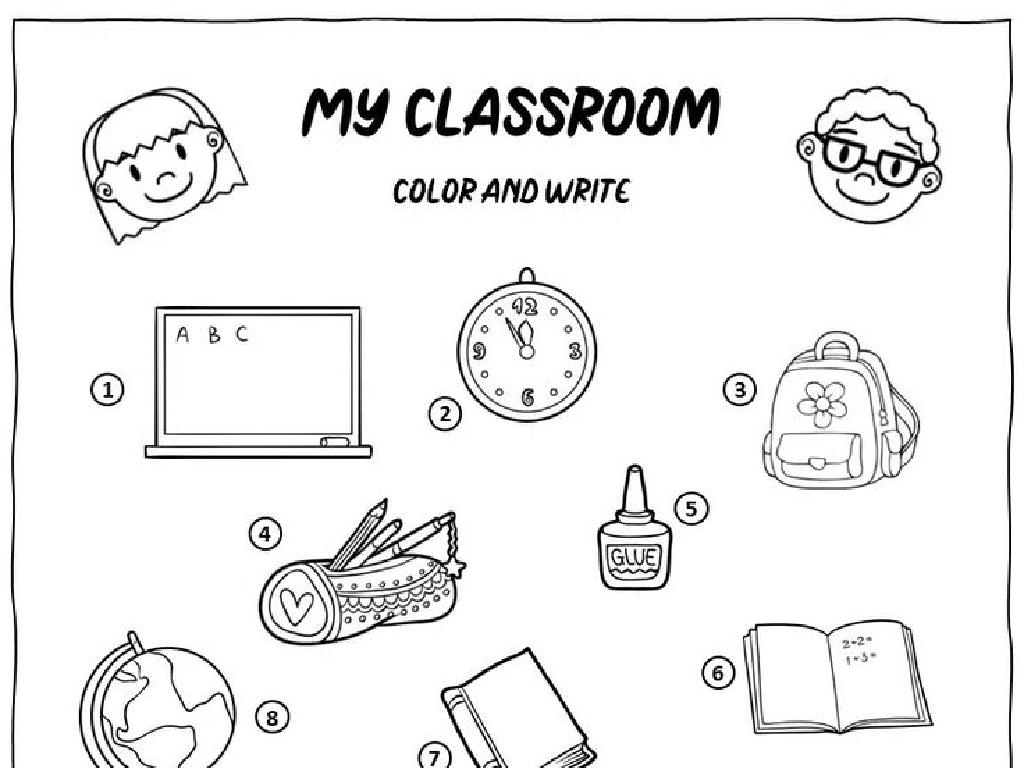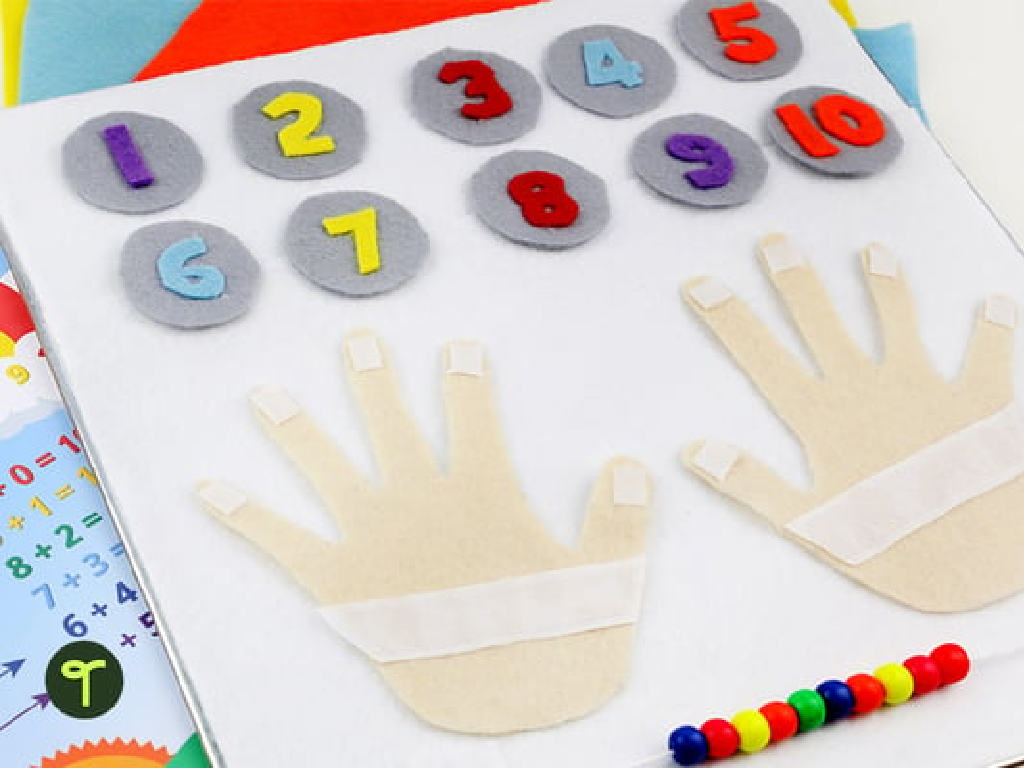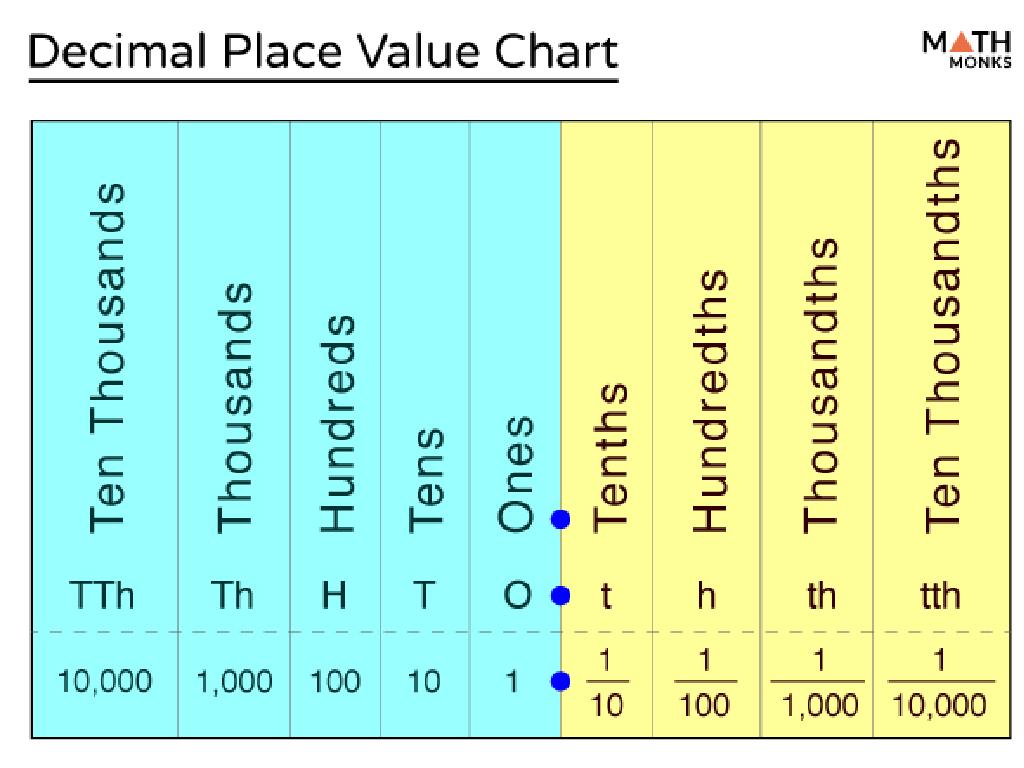Find The Area Of Rectangles: Word Problems
Subject: Math
Grade: Third grade
Topic: Area
Please LOG IN to download the presentation. Access is available to registered users only.
View More Content
Exploring Area with Everyday Objects
– Area is space inside a shape
– Everyday objects like mats have area
– Example: How many tiles will fit on your bathroom floor?
– Knowing area helps in real life
– Helps with buying carpet, covering tables, or building
– Area is measured in square units
– If a mat is 2 units by 3 units, its area is 6 square units
|
This slide introduces the concept of area to third-grade students by relating it to familiar objects in their daily lives. Start by explaining that area is the amount of space inside the boundary of a flat object, like the surface of a classroom table or a playground. Use relatable examples such as how many sleeping mats can fit in a tent or how much paper is needed to cover a book. Emphasize the practicality of understanding area in tasks such as flooring installation or arranging furniture. Conclude by explaining that area is measured in square units, providing a foundation for future lessons on calculating the area of various shapes.
Recap: Shapes, Sizes, and Area
– Review rectangles and squares
– Rectangles have 4 sides, squares have equal sides
– Identify lengths and widths
– Length is the longer side, width is the shorter side
– Discuss rectangle variety
– Not all rectangles look the same; they vary in length and width
– Understanding area calculation
– Area is found by multiplying length by width (Area = length x width)
|
Begin with a quick review of rectangles and squares, highlighting that while all squares are rectangles, not all rectangles are squares. Reinforce the concept of length and width, ensuring students can identify these on various rectangles. Engage the class in a discussion about the diversity of rectangles they see in everyday life, emphasizing that rectangles can have different proportions. Conclude with an explanation of how to calculate the area of a rectangle by multiplying the length by the width. Use visual aids and hands-on activities to solidify these concepts. Prepare to show examples of word problems in the next slides.
Exploring Rectangle Areas
– Area equals length times width
– Area = length x width, e.g., 5 ft x 3 ft = 15 sq ft
– Area measured in square units
– Square units show the size of the surface
– Example: Calculate a rectangle’s area
– If a garden is 8m long and 4m wide, its area is 8m x 4m = 32 sq m
– Practice with different sizes
|
This slide introduces the concept of finding the area of a rectangle, a fundamental skill in geometry. Start by explaining the formula for calculating the area of a rectangle, which is the length of the rectangle multiplied by its width. Emphasize that the area is always expressed in square units, which could be square meters, square feet, etc., depending on the units used for length and width. Provide a clear example, such as finding the area of a garden or a classroom floor, to illustrate the concept. Encourage students to practice with rectangles of different sizes to reinforce their understanding. The goal is for students to become comfortable with the formula and to recognize that area represents the amount of space inside the perimeter of a rectangle.
Solving Area Word Problems
– Understanding word problems
– Word problems describe math situations in words.
– Identifying key information
– Look for numbers, shapes, and measurement units.
– Steps to solve problems
– Read carefully, write an equation, solve, and check.
– Practice with examples
– Use rectangle area problems to apply what we’ve learned.
|
This slide introduces students to the concept of word problems related to finding the area of rectangles. Begin by explaining that word problems tell a story about numbers and shapes. Teach students to identify important information such as lengths and widths, and to disregard irrelevant details. Go over the steps to solve a word problem: read the problem, write down the equation (length x width for area), solve the equation, and then check the answer. Provide examples of rectangle area word problems for students to practice, such as finding the area of their desk or a book cover. Encourage them to visualize the problem and draw it out if necessary.
Solving Area Word Problems
– Carefully read the problem
– Highlight key numbers and words
– Recall the area formula
– Area of a rectangle = length x width
– Calculate the area
– Use the numbers to find the rectangle’s area
|
This slide is aimed at guiding third-grade students through the process of solving word problems related to finding the area of rectangles. Start by instructing students to read the problem thoroughly to understand what is being asked. Teach them to identify and underline or highlight the important information, such as measurements and dimensions, which are crucial for solving the problem. Review the formula for the area of a rectangle (length x width) and ensure that students are comfortable with it. Finally, demonstrate how to substitute the identified numbers into the formula to calculate the area. Encourage students to practice with different problems and to always double-check their work. Provide several example problems and work through them together as a class.
Calculating Area: Garden Word Problem
– Understand the garden’s shape
– Our garden is a rectangle, which has 4 sides.
– Find the rectangle’s length and width
– Length is the longer side, and width is the shorter side.
– Calculate the garden’s area
– Area is length times width. What’s the area if length is 8ft and width is 3ft?
– Practice with a real example
– Let’s use the steps to solve a garden problem together.
|
This slide introduces students to solving word problems involving the area of rectangles. Start by ensuring they understand the shape of the garden as a rectangle. Then, guide them to identify the length and width within the word problem. Teach them the formula for the area of a rectangle (length x width) and how to apply it to find the area of the garden. Provide a clear example, such as a garden with given dimensions, and walk through the calculation step by step. Encourage students to visualize the problem and draw it out if it helps. After explaining, give them a similar problem to solve on their own to reinforce the concept.
Area Practice: Real-World Problems
– Calculate classroom carpet area
Length x Width = Area. If a classroom is 8 feet by 10 feet, what’s the area?
– Determine the park’s area
Parks are big rectangles. If one side is 30 feet and another is 70 feet, find the area.
– Use multiplication for area
– Draw a rectangle to visualize
Drawing helps us see the problem. Draw your own rectangle to find the area.
|
This slide is designed to engage students with practical applications of finding the area of rectangles through word problems. For the classroom carpet, guide students to multiply the length by the width to find the area. For the park, encourage them to think of it as a large rectangle and use the same method. Emphasize the use of multiplication to calculate area and the importance of visualizing problems by drawing. Provide graph paper for students to draw rectangles representing each problem. This will help them understand the concept of area in a tangible way. Encourage students to discuss their methods and answers with the class to foster collaborative learning.
Class Activity: Area of Rectangles
– Pair up and write a rectangle area problem
– Swap problems with another pair
– Solve the exchanged problem
– Discuss solutions together in class
|
This activity is designed to engage students in creating and solving real-world problems related to the area of rectangles. By working in pairs, students can collaborate to come up with a word problem that involves calculating the area. Once they have written their problem, they will exchange with another pair to solve a new problem. This peer-to-peer interaction encourages teamwork and critical thinking. As a teacher, facilitate the activity by ensuring each pair creates a solvable problem and understands the concept of area. After solving, lead a class discussion where students explain their problem-solving strategies and the solutions they found. Possible activities could include creating word problems based on their classroom, school objects, or even imaginary playgrounds. Encourage creativity and application of the area formula: length x width.
Wrapping Up: Area of Rectangles
– Recap: Area measures space inside
– Solving word problems is practical
– Helps with real-life math situations
– Homework: Measure your bedroom
– Use a tape measure for length & width
– Create a bedroom area word problem
– Include numbers, units, and a question
|
Today, we’ve learned that the area is the measure of space inside a rectangle and it’s calculated by multiplying the length by the width. Understanding area helps us solve practical problems, like determining how much paint is needed for a wall or carpet for a room. For homework, students will apply this knowledge by measuring their bedroom and creating a word problem. This exercise will reinforce their understanding of area and encourage them to think critically about how to formulate a problem. Provide examples of word problems to guide them, and remind them to include clear measurements, units (square feet or square meters), and a question for solving the area.





